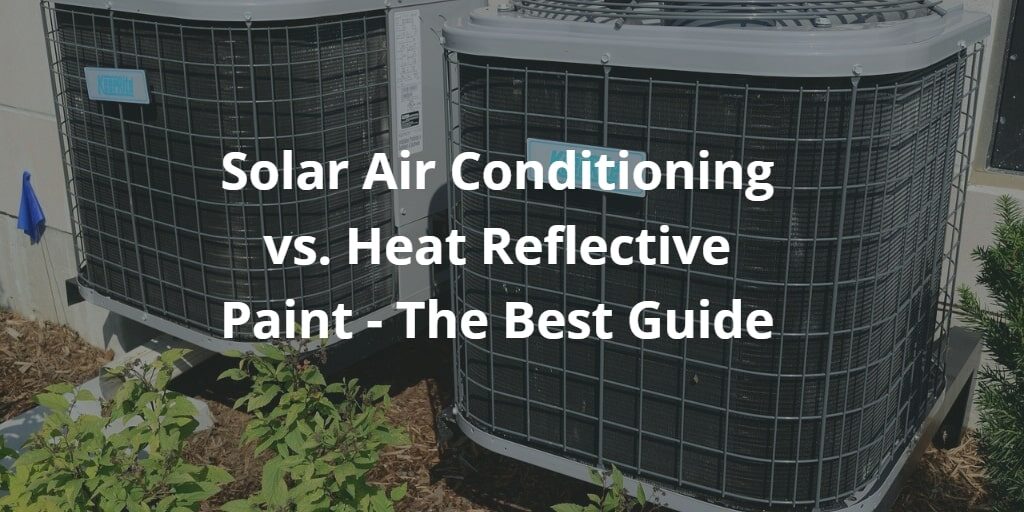
One of the most critical aspects of home and office maintenance in the Philippines is air conditioning. The weather is hot and quite humid and this means you have to cool the indoors throughout the year. Whether you’re a homeowner or you rent your home, you have to select the most effective air conditioning solution to live comfortably. The same applies to office and business spaces.
If you’re looking for the best way to cool your living or working space, the top two options are solar air conditioning and using heat reflective paint. This post examines each of these air conditioning systems in detail to help you make the best decision.
Overview of Solar Air Conditioning
Solar photovoltaic air conditioners convert sunlight into electricity. Sunlight is a readily available resource in the country and this makes solar air-cons a popular solution with office and homeowners. Your solar air conditioner system will work just like a conventional split AC system, but in this case, the unit is powered by energy from the sun.
The most common solar air cons are:
- Hybrid systems are a combination of photovoltaic technology (PV) and direct current (DC). The AC unit switches from solar energy to the battery backup.
- Evaporative coolers (Solar-powered absorption chillers): These units work by heating and cooling water through evaporation and condensation. Solar energy powers the fans and motor in the system. This AC unit cools your living space by blowing air over an over water-saturated material.
- Portable Solar Powered Air Conditioner: This is ideal for outdoor use. Whether you wish to go camping or for a picnic, a portable solar AC is perfect for you.
Whatever solar air conditioning system you choose, there are multiple benefits, including:
- Clean energy: By harnessing natural sunlight, solar-powered AC units reduce reliance on fossil fuels. This, in turn, cuts down on greenhouse gas emissions.
- Lower utility costs: The cost of running a solar air-con is lower compared to conventional split AC systems.
- Minimal disruptions in case of outages
- Low-cost maintenance: One you install your air conditioner, you don’t have to worry about intense maintenance.
- Tax benefits and incentives from the government continue lowering the total cost of appliances and installation of solar systems.
The major drawback of solar AC units is the high initial cost. The reliance on weather is also a problem as weather patterns have become unpredictable. Solar panels can also deteriorate due to exposure to the elements. However, high-quality panels with long-running warranty are now available.
What is Heat Reflective Paint?
Reflective paints reflect the heat component of incident sunlight. When used on roofing systems, this kind of paint acts as a radiative barrier to minimize surface heating. The paint improves your buildings’ insulation properties in an eco-friendly way. Most paints come in light colors, which can reflect up to 80% of solar radiation.
With a roof painted with reflective paint, you enjoy a cooler building. You will reduce the need for air conditioning. In turn, this lowers carbon dioxide emissions. These paints have become common in urban areas to help homeowners reduce the “urban effect.”
Another advantage of heat reflective paint is their protective ability. This unique paint can ensure your roof stays in good condition by protecting against exposure to sunlight and UV light. Continuous exposure leads to cracks and splits, which affect your roof’s integrity.
Some of the drawbacks of this air conditioning technique include the high installation costs, mold problems, and limited applications of such roofing systems.
Solar Air Conditioning vs. Heat Reflective Paint
With this insight into the two air conditioning solutions, it becomes easier to pick the most suitable for your home. Solar systems have been around for a long time and in most cases, air-con units are part of a larger residential solar unit.
When you install photovoltaic panels on your home, they can power different power needs, including air conditioning. This gives a solar AC unit an advantage over heat reflective paint.
What’s more, solar panel application is now widespread which continues lowering the cost of hardware and installation. Solar systems are applicable in both commercial and residential facilities. For reflective pain, the limited application means they can only work on residential homes and this is a major drawback.
There’s a lot of research showing the myriad benefits of solar-powered home systems, including air conditioning. You can improve your home’s energy efficiency, reduce the cost of home utility bills while also contributing to environmental conservation.
While heat reflective paint also promises similar benefits, solar power has been proven across the world. Choosing between a solar air conditioner in the Philippines or reflective paint boils down to efficiency and costs. Solar systems are a long-term home improvement project and they’re an asset that improves your home’s value. In many cases, homeowners who use heat-reflective paint on their roofs still install solar air conditioning for maximum benefits.
Cool roofs built using heat reflective paint are a new popular technology and they can help reduce your home cooling costs. However, they cannot replace solar air conditioning whose benefits are well-documented.